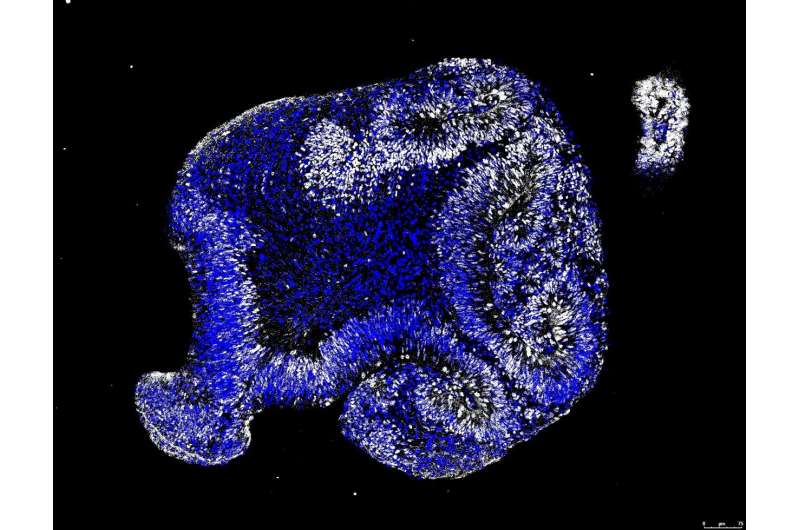This article has been reviewed according to Science X's editorial process and policies. Editors have highlighted the following attributes while ensuring the content's credibility:
fact-checked
peer-reviewed publication
proofread
Stem cell model of human brain development suggests embryonic origins of Alzheimer's disease

Alzheimer's disease (AD) mainly affects the older population. Recent research found early disease signs in cell culture models of early human brain development, raising the possibility that the disease has its origins much earlier in life, possibly during embryogenesis—the formation and development of an embryo.
Alzheimer's disease is a highly prevalent, debilitating, and potentially fatal neurodegenerative disease with limited treatment options. Patients are typically diagnosed at an advanced disease stage, limiting the possibilities for early therapeutic intervention. Although for most patients the disease cause is unknown and likely multifactorial, some patients have known mutations in genes affecting neuronal function and survival, leading to familial forms of AD.
Abnormal brain structures have been seen in children and young adults with familial AD years before the onset of AD symptoms, suggesting that the disease may have its origins much earlier in life. Jenny Hsieh and colleagues from the University of Texas at San Antonio, U.S. now asked how AD-associated gene mutations affect early human brain development.
The researchers grew so-called cortical spheres, which are small clumps of cells resembling human embryonic brains, from CRISPR-edited stem cell lines harboring fAD mutations. Intriguingly, AD mutations interfered with normal development of these cortical spheres, whereby mutant spheres were larger and contained less mature and functioning neurons compared to cortical spheres without the mutations.
By pinpointing the underlying molecular pathways, the researchers could identify points of intervention to restore normal brain development in their cortical sphere model. Interestingly different types of AD-associated mutations caused distinct developmental abnormalities in the cortical spheres, highlighting the need for tailoring therapies individually for each patient.
This work, published in the recent issue of Stem Cell Reports, paves the way for studying AD in its early stages with the possibility of identifying more effective or preventive treatments for AD in a patient-specific fashion.
More information: Jenny Hsieh, Familial Alzheimer's disease associated PSEN1 mutations affect neurodevelopment through increased Notch signaling, Stem Cell Reports (2023). DOI: 10.1016/j.stemcr.2023.05.018. www.cell.com/stem-cell-reports … 2213-6711(23)00197-2


















